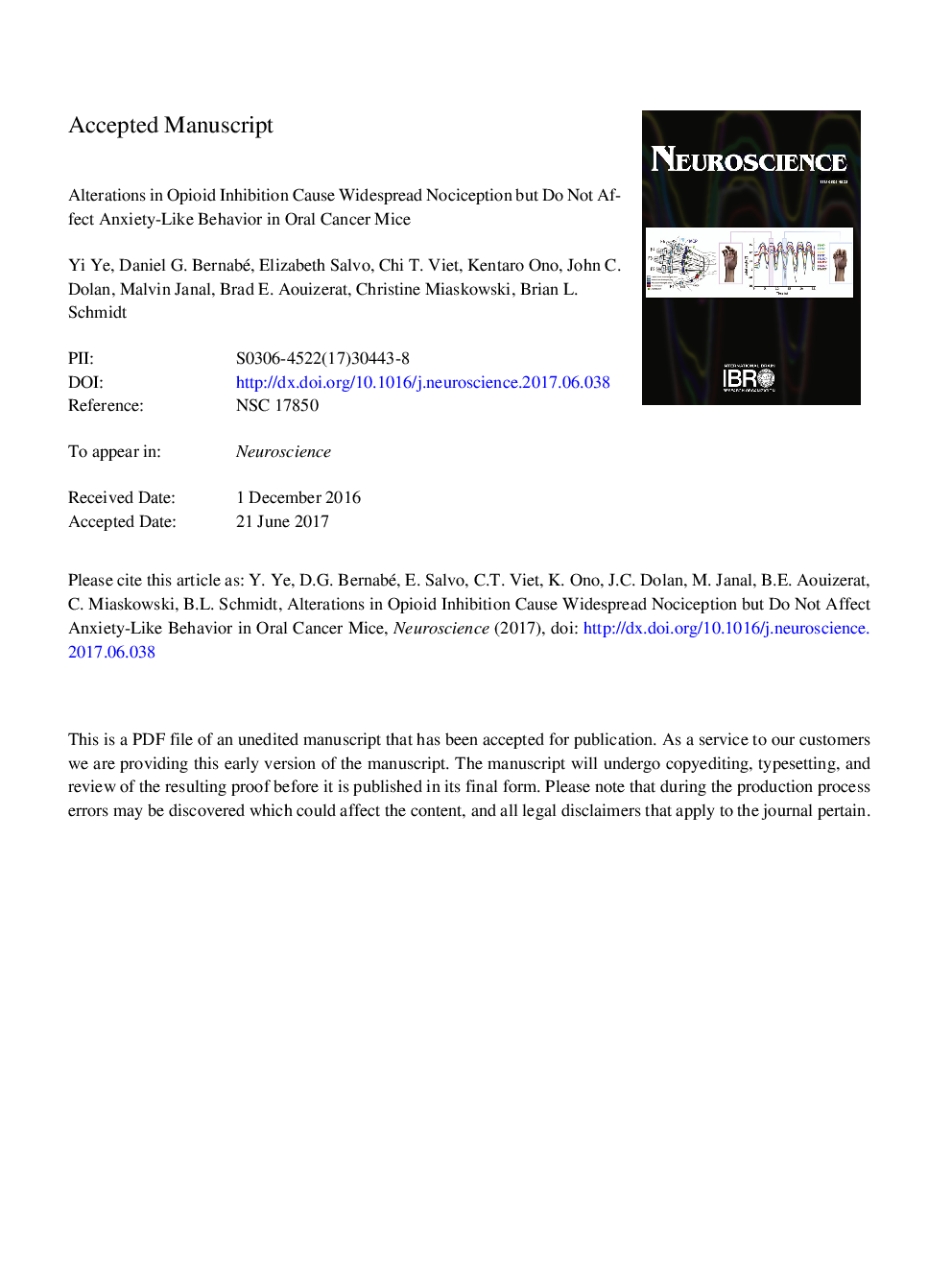ترجمه فارسی عنوان مقاله
تغییرات در مهار اپیوئیدی باعث افزایش غلظت نیتروژن می شود، اما رفتار اضطراب مانند در موش های سرطانی دهان را تحت تاثیر قرار نمی دهد
عنوان انگلیسی
Alterations in opioid inhibition cause widespread nociception but do not affect anxiety-like behavior in oral cancer mice
| کد مقاله | سال انتشار | تعداد صفحات مقاله انگلیسی |
|---|---|---|
| 133378 | 2017 | 31 صفحه PDF |
منبع

Publisher : Elsevier - Science Direct (الزویر - ساینس دایرکت)
Journal : Neuroscience, Volume 363, 5 November 2017, Pages 50-61
ترجمه کلمات کلیدی
آلدینیا، درد سرطان، اضطراب، سر و گردن، درد گسترده، غربالگری
کلمات کلیدی انگلیسی
allodynia; cancer pain; anxiety; head and neck; widespread pain; nociception;

